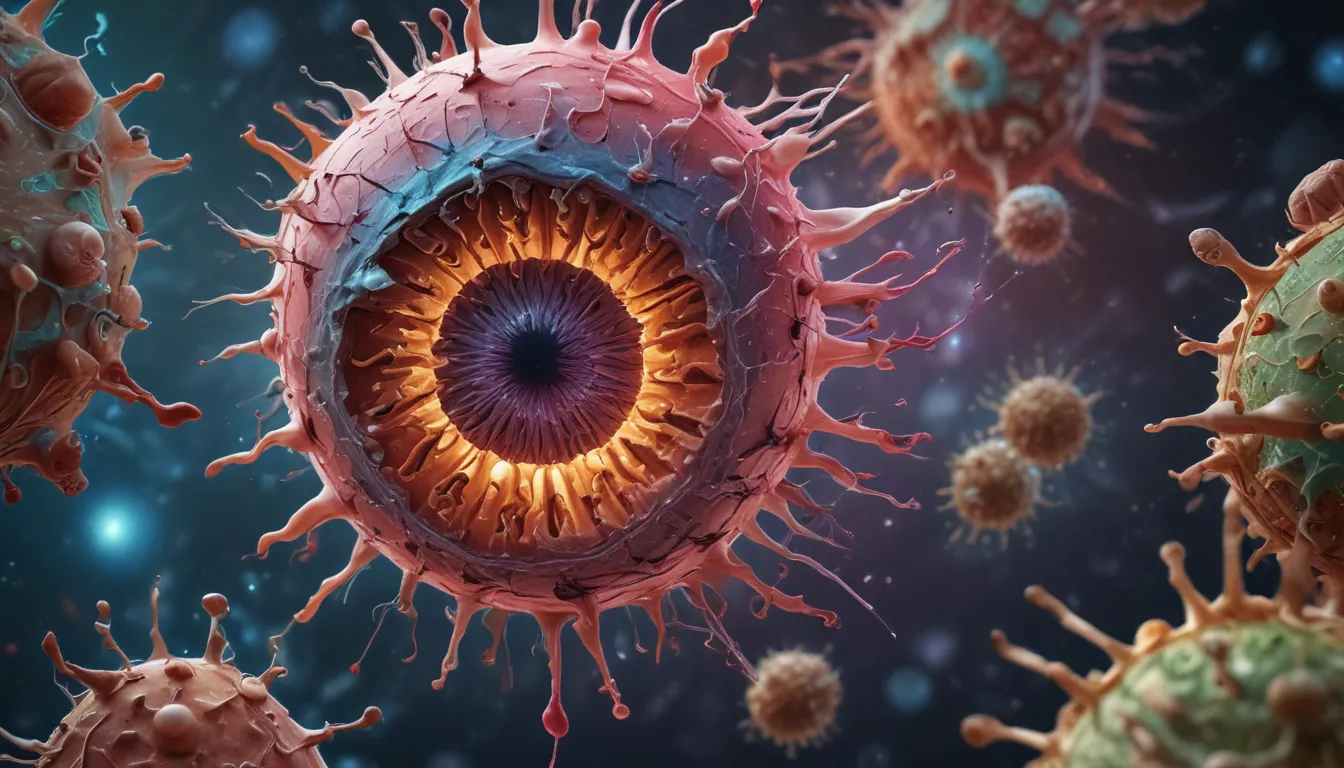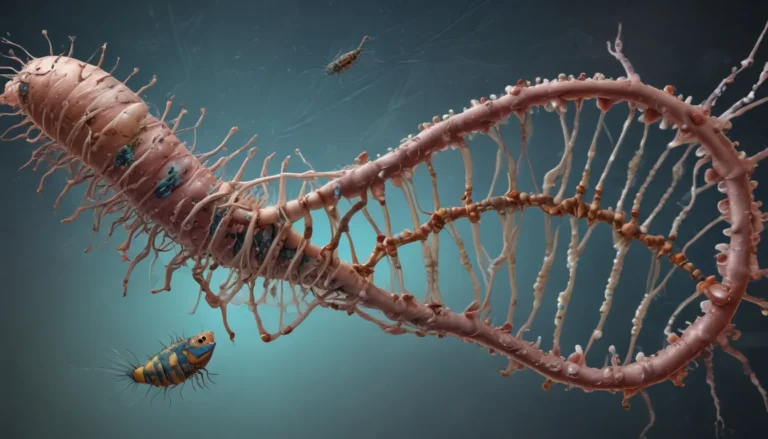A Note About Images: The images used in our articles are for illustration purposes only and may not exactly match the content. They are meant to engage readers, but the text should be relied upon for accurate information.
Imagine delving into a world where viruses infiltrate, replicate, and cause diseases within their host organisms. This captivating realm of study, known as viral pathogenesis, unravels the intricate mechanisms through which viruses interact with our cells, tissues, and immune systems. Through advancements in technology and scientific understanding, researchers have uncovered a myriad of fascinating facts about viral pathogenesis that continue to astonish and captivate us. Join us on a journey through 18 captivating insights into the realm of viral pathogenesis, shedding light on the remarkable strategies employed by viruses and the intricate dance between our bodies and these infectious agents.
Unveiling the World of Viral Pathogenesis
Viral pathogenesis stands as a pivotal field within virology, focusing on how viruses infect host cells, replicate, and ultimately cause diseases. By comprehending these mechanisms, scientists can develop treatments and vaccines to combat viral illnesses, safeguarding our health in the process.
The Intriguing Routes of Entry for Viruses
Viruses can enter the body through various pathways, including inhalation, ingestion, direct contact, or even through vectors like mosquitoes. Once inside, they target specific cells and tissues, initiating the chain of infection.
The Hijacking of Cellular Machinery
Upon infiltrating a host cell, viruses hijack the cellular machinery to replicate their genetic material and produce more viral particles. This manipulation is crucial for viral replication and spread within the body, showcasing the cunning tactics of these microscopic invaders.
The Dance Between Host and Virus
A complex interplay unfolds between the virus and the host’s immune system in viral pathogenesis. The immune response can either control and eliminate the virus or exacerbate the severity of the infection, highlighting the delicate balance at play.
Understanding the Diverse Pathogenesis Mechanisms
Each virus possesses its unique modus operandi in causing diseases. From direct cell destruction to immune system manipulation, comprehending these mechanisms is vital for crafting effective treatments and vaccines against viral infections.
Navigating Acute and Chronic Infections
While some viral infections resolve quickly, leading to acute illnesses, others establish persistent infections, resulting in chronic conditions that can endure for months or even years. The distinction between acute and chronic infections shapes the landscape of viral pathogenesis.
The Art of Evading the Immune System
Viruses employ various strategies to evade the immune system, such as hiding within host cells, mutating rapidly, or inhibiting immune responses. These evasion tactics enable viruses to persist and trigger recurrent infections, posing a formidable challenge to our defense mechanisms.
Unveiling the Influence of Host Genetics
Genetic variations in host genes can sway individuals’ susceptibility to viral infections and their outcomes. Specific genetic traits can modify disease severity, treatment effectiveness, and overall immune responses, underscoring the personalized nature of viral pathogenesis.
A Symphony of Environmental Factors
Environmental conditions, encompassing temperature, humidity, population density, and hygiene practices, can shape the survival and transmission of viruses. These external factors contribute to the spread of viral infections within communities, highlighting the multifaceted nature of viral pathogenesis.
The Vital Role of Vaccines
Vaccines serve as critical tools in preventing viral pathogenesis by priming the immune system to recognize and combat specific viral pathogens. Through vaccination, we can mitigate the burden of viral diseases and curtail their rapid transmission.
Harnessing Antiviral Drugs
Antiviral drugs target specific steps in the viral replication cycle, impeding the virus’s ability to multiply. These medications play a pivotal role in controlling viral infections, offering relief from symptoms and potential complications when administered promptly.
Pioneering New Treatments Through Research
Delving into viral pathogenesis unravels the molecular underpinnings of viral infections, paving the way for novel therapeutics that target viral replication, entry mechanisms, or host immune responses. The wealth of knowledge gained fuels the development of innovative treatments against viral diseases.
The Impact of Host Immune Status
An individual’s immune status, encompassing immunodeficiency or prior immunity to specific viruses, can sway the course of viral infections. Immunocompromised individuals often face heightened susceptibility to severe viral illnesses, underscoring the intricate interplay between host immunity and viral pathogenesis.
Unveiling Long-Term Health Consequences
Even after resolving, certain viral infections can leave a lasting impact on health, elevating the risk of chronic conditions like liver cirrhosis or cancer. This enduring legacy of viral pathogenesis underscores the importance of continued vigilance against infectious diseases.
Global Public Health and Viral Pathogenesis
The study of viral pathogenesis holds immense significance for global public health, offering crucial insights into outbreak prevention and control strategies. This knowledge underpins public health initiatives, from vaccination campaigns to early detection measures, safeguarding communities worldwide.
Navigating Emerging Viral Challenges
The emergence of new and previously unknown viruses continuously challenges our understanding of viral pathogenesis. Swift research collaboration and effective containment strategies are imperative in managing and mitigating the impact of emerging viral threats, showcasing the dynamic nature of viral pathogenesis research.
The Era of Technological Advancements
Revolutionary technologies like high-throughput sequencing, structural biology, and advanced imaging techniques have propelled viral pathogenesis research into new frontiers. These cutting-edge tools unveil the intricate dance between viruses and host cells, offering unprecedented insights into viral infections.
Unleashing Therapeutic Advancements
By deciphering the mechanisms of viral pathogenesis, scientists can pinpoint novel therapeutic targets and craft innovative approaches to combat viral infections. This wealth of knowledge fuels the development of novel antiviral therapies and vaccines, underscoring the transformative power of viral pathogenesis research.
In conclusion, the realm of viral pathogenesis stands as a captivating frontier where viruses and host cells engage in a delicate dance of infection and immunity. Understanding the nuances of viral pathogenesis is pivotal for thwarting the spread of viral diseases and safeguarding global health. As we delve deeper into this intricate world, armed with cutting-edge research and collaborative efforts, we pave the way for a future where viral threats are met with resilience, knowledge, and unwavering resolve.
FAQs on Viral Pathogenesis
Q: What defines viral pathogenesis?
A: Viral pathogenesis encapsulates the process through which viruses infect and induce diseases within a host organism.
Q: How do viruses penetrate cells?
A: Viruses typically invade cells through receptor-mediated endocytosis or direct membrane fusion, initiating the infection cascade.
Q: What factors shape the severity of viral infections?
A: The severity of viral infections can be influenced by viral strain virulence, host immune responses, and underlying health conditions, among other variables.
Q: Can viral infections have long-term repercussions?
A: Some viral infections can lead to enduring consequences, such as chronic illnesses, organ damage, or an elevated risk of specific cancers, underscoring the lasting impact of viral pathogenesis.
Q: How do vaccines illuminate the realm of viral pathogenesis?
A: Vaccines serve as valuable tools in studying different stages of viral pathogenesis and devising strategies to mitigate infection risks, thanks to their ability to stimulate immune responses without causing disease.
Q: Can antiviral treatments eradicate viral infections completely?
A: While antiviral treatments can effectively manage certain viral infections, complete eradication may not always be feasible. However, these medications play a crucial role in symptom management and complication prevention.
As we journey through the captivating realm of viral pathogenesis, let us embrace the fascinating insights that guide us towards a future of unparalleled understanding, resilience, and innovation in the face of infectious threats.






